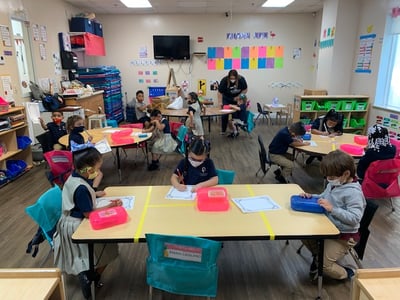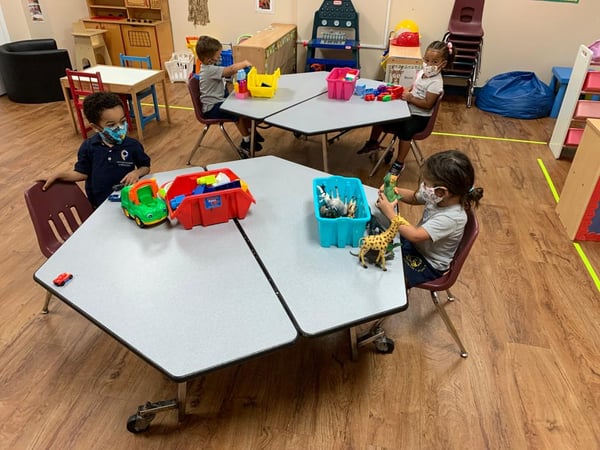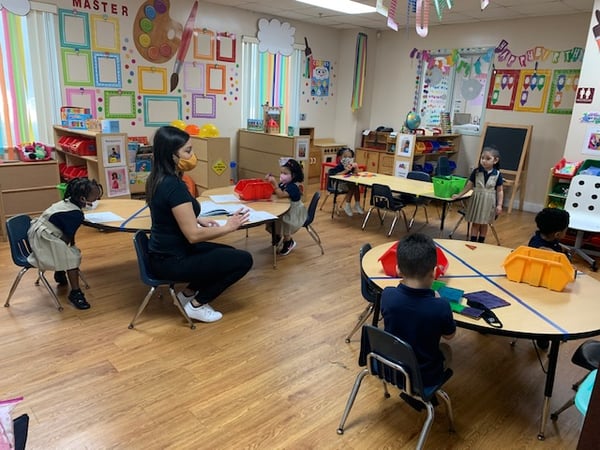
Calvary City Academy & Preschool closed on March 13, along with most programs in Florida. While closed, we had much to prepare for reopening. While children were home, we prepared packets to send home, met with children virtually, and even hosted things like field day, spirit week, and graduation virtually! Even with those successes, we were so happy to be able to return to being in-person when we reopened in June. Since June, we’ve learned a lot. Here’s what’s working for us:
Build Routines
When we started school, we spent the first 2 weeks just building routines. We focused only on learning the new hand-washing routine, how to line up, how to maintain space, how centers will work, and more. If you have planned a moment to teach, and can’t because you need to take more time to build relationships and routines, don’t worry about it. Just do what you can do.

Be prepared
The children have been great with masks and new routines. They’ve learned how to keep space while lining up and walking in the hallways. Our teachers are in a good pattern with one teaching while the other supports hand-washing, cleaning, disinfecting, and sanitizing. We’ve eliminated cloth material and things we can’t easily wipe down. Even with that, we have extras of everything- extra masks, extra gloves, extra supplies. And we also have an extra room, so if someone feels sick or has a fever, we can quarantine them until their family can come.
Support each other
Because each classroom has two teachers, we tell our teachers they can always take a breather. We make sure teachers can take a walk at lunch. We have an empty classroom, so if a teacher needs to talk, we can sit, distanced, and talk it out. If a teacher is struggling, we brainstorm and help each other. Building a good environment that supports teamwork has really helped.
Engage Families
Now that parents don’t come into the facility and we do quick, masked drop-offs, it can be hard to find time to connect with the parents in traditional ways. My assistant director and I make sure we’re available to communicate. If parents need to meet with a teacher, we use Zoom for that. We have also found it helpful to use CLASS Dojo, signs with updates outside the building, and a daily planner that goes home. And of course, we also use email. The parents are excited and are doing well!
Professional Development is still important
This is all still new so we’re always looking for more information. I’ve been reading what is working for others. I get a lot of ideas from the CLASS Learning Community. And coaching is always good! We’re still coaching during this time. Any training, webinar, or resource I can offer to our teachers, I do.


